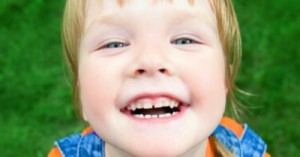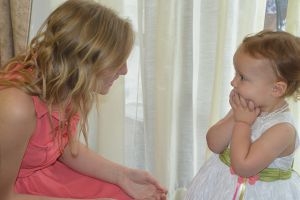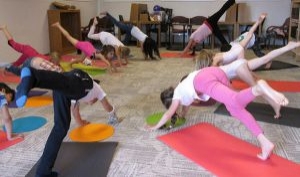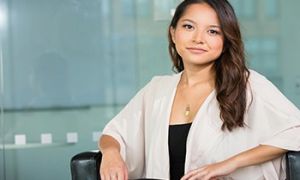It is essential that all children growing up in Australia have access to opportunities to become proficient speakers of English.
For children who are learning English as a second (or additional language), it requires early childhood Educators to understand how children learn a second language. This enables the Educators within the service to support the child learning of English.
Supporting Children to Learn English
When children learn English they need explicit modelling and language teaching, the appropriate time to acquire the new language and quality exposure to English.
Activities to assist babies and toddlers learning English as a second language are no different from those that are provided from children with English as their first language. It is important to provide a range of interactions, particularly those that happen on a one to one basis, or in a small group.
These regular interactions provide the best outcomes for learning and practising the language.
Strategies Include:
- Greet children every day using repetitive language such as ‘hello’, ‘how are you?’, ‘bags go here’, ‘you can hang up your coat’.
- Help children become familiar with English by using routine phrases every day such as ‘come and sit on the mat’, ‘is everyone listening?’, ‘would you like to do a puzzle?’ ‘you can wash your hands’.
- Use visual clues when speaking with children, for example, take photos of familiar routines such as meal or snack times.
- Encourage children to repeat the words said by other children.
- Use gestures to describe what is happening, for example ‘Marko said he wants to wipe the table, so I gave him the cloth’.
- Acknowledge what children say, including single words.
- Provide opportunities for children to hear everyday language and introduce new vocabulary in context.
- Plan small groups to include children who may be reluctant to join a bigger group.
- Illustrate stories using a felt board to provide visual support and encourage children to retell stories using visual aids.
- Ask parents and bilingual early childhood professionals to read stories to children in their own language. If children hear a story often they get more information
Language To Use During Interactions
To maximize the exposure of young English language learners to the English language, use the following strategies:
- Use simple but explicit language to “label” your own actions as you carry them out.
- Saying, “First, I am putting this big, red block here. What should I put next?”, for example, can transform a “building” activity into a language-enhancing activity.
- Label children’s actions as they carry them out the same way you label your own actions.
- Ask children to participate actively in an activity by giving them specific instructions.
- Saying, “Hand me the tiny brush” while pointing to it, for example, helps young children pay attention to what you are doing while building their vocabulary.
- Verbalize your thinking and the strategies you use to solve a problem. Saying, “Let’s see why this tower is falling down. Is it too tall? I wonder what would happen if we took the top block off?” helps involve children in the process of problem-solving and brainstorming possible solutions.
- Use language along with demonstration when introducing a new skill or concept. For example, if you are teaching a child to build a tall tower, saying “You put the biggest block first, then a smaller one on top, then another even smaller one on top …” while doing it, connects the words with the action and helps children remember the sequence when building on their own.
- When children make a vocabulary or grammatical error, recast what they said using the correct form, and then move on with the conversation.
- Make an effort to expand on children’s language. For example, if a child says, “My shoes,” you can talk about the colour or type of shoes the child is wearing.
What do I do if children do not understand what I am saying?
Young children learning English, especially in the beginning and emerging stages, will not understand everything an adult is saying in English. Here are some suggestions for improving communication.
Strategies Include:
- Supplement verbal communication with gestures like pointing, touching an object, making motions with your hand like the verb you are describing (e.g., swimming in water).
- Use objects and pictures to support explanations and event descriptions.
- Repeat the same idea or instruction more than once, the second time using shorter sentences, easier vocabulary and speaking more slowly.
- To check for comprehension, try to ask questions where the response is not just a “yes” or a “no.”
- Tell and talk about the story in a book rather than reading it directly. Written language is harder for young children to understand than spoken language because sentences are often longer and have more difficult words in them.
- Choose books with simpler language and/or repetition books that are interesting to the
- Encourage children to “chime in” during the parts of the story they are familiar with.
Children need to feel secure and successful even when they are beginners. Incorporate the same language functions, vocabulary and sentences in many activities and across themes. Make sure children get numerous opportunities to both hear and use language functions in conversation.
Providing Support to Parents
Involving parents is essential to supporting children to maintain their home language.
Many bilingual parents believe that they are doing their children a favour by not speaking their first language at home. In their eagerness to adjust to a new setting, parents may overlook or avoid this important aspect of their children’s development. Yet knowing their parent’s language is vital to children’s cultural identity and maintaining healthy family relationships.
Strategies Include:
- Help parents understand the importance of their role in their children’s literacy development.
- Help parents identify their language goals for their child and themselves.
- Create a “bilingual” learning environment through materials, labelling, and other strategies and learn a few helpful phrases to fit with daily routines in the child’s home language.
- Ensure children/parents are provided with additional support and resources, if required, such as those available through the Inclusion Support Agency and the Bicultural Support Program.
- Provide parents with resources in their language and take home learning tools that support their home language and English language learning.
- Encourage parents who have limited English proficiency to consider building their own language skills.
- Encourage parents to create their own resources. Record stories and songs for the children, use them in the centre or ask a parent to join in with songs or read a story in their home language.
- Encourage parents to write the labels in their home language.
- Help parents connect with other families who speak their language.
Children that speak a language other than English bring rich and diverse cultural and linguistic knowledge to the early childhood and school settings.
References:
Early Years Language Resource, VCAA, Victoria Education Department
Supporting Children’s English, Fletcher Montessori
Working With Children As A New Language, Education Alberta
Diversity In Practice, Resourcing Parents, NSW Government







 Open ended questions cannot be responded to with one word answers such as yes or no. These types of questions enables a child to provide
Open ended questions cannot be responded to with one word answers such as yes or no. These types of questions enables a child to provide During your child’s preschool years, an important milestone begins to emerge. This is the development of pre-writing skills. Pre-writing skills are used to encourage, develop
During your child’s preschool years, an important milestone begins to emerge. This is the development of pre-writing skills. Pre-writing skills are used to encourage, develop Open ended materials enables children to play freely. They are objects that have no rules to follow, use or function. Raw materials that can be
Open ended materials enables children to play freely. They are objects that have no rules to follow, use or function. Raw materials that can be An Acknowledgment of the Country is a way of showing respect for the Traditional Owners and can be given by both non-Indigenous people and Aboriginal
An Acknowledgment of the Country is a way of showing respect for the Traditional Owners and can be given by both non-Indigenous people and Aboriginal Language plays an important role in a child’s development. It enables a child to communicate effectively with their family, learn at school, socialize with friends,
Language plays an important role in a child’s development. It enables a child to communicate effectively with their family, learn at school, socialize with friends, Like adults, children have to deal with their own stress in life. Moving house, starting a new school, preparing for a new sibling - these are
Like adults, children have to deal with their own stress in life. Moving house, starting a new school, preparing for a new sibling - these are Playdough is such a versatile material. It provides numerous benefits to children as they manipulate it, it is safe and soothing and provides children with
Playdough is such a versatile material. It provides numerous benefits to children as they manipulate it, it is safe and soothing and provides children with Teaching children about sustainability enables them to appreciate and respect the natural environment. Early childhood services can provide meaningful hand on learning experiences in order
Teaching children about sustainability enables them to appreciate and respect the natural environment. Early childhood services can provide meaningful hand on learning experiences in order Recycling is an important concept that teaches children to care for the environment. It encourages children to be responsible and show a growing appreciating for
Recycling is an important concept that teaches children to care for the environment. It encourages children to be responsible and show a growing appreciating for When children apply paint to paper, glue things together, or pound a lump of clay, they experiment with colour, shape design and texture.
When children apply paint to paper, glue things together, or pound a lump of clay, they experiment with colour, shape design and texture.



